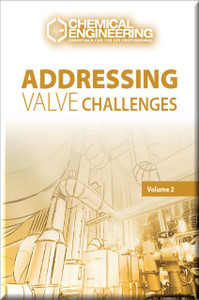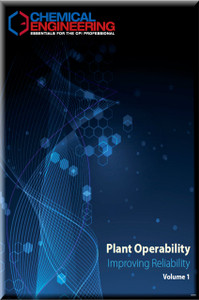Description
Valves are an essential part of all chemical process industries (CPI) operations. This guidebook provides practical engineering guidance for selecting, specifying, and sizing control valves, pressure-relief valves, and emergency shutdown devices to enable proper fluid control while ensuring overall reliability and safety. In addition, the guidebook covers valve positioners, sensors, rupture discs, pressure-relief systems, control diagnostics, troubleshooting, and plant revamps. All articles were originally published in Chemical Engineering between 2012 and 2019.
Features & Benefits
- Provides practical, actionable guidance for valve selection, sizing, and operation
- Covers control valves, pressure-relief valves, rupture discs, and emergency shutdown valves
- Includes tips for valve positioners, sensors, diagnostics, and troubleshooting in the field
- Addresses pressure-relief system design, including two-phase sizing and discharge coefficient calculations
- Provides insights for hygienic operations, plant revamps, and improving overall operability
- Helps reduce emissions, product losses, and operational risks
- Supports compliance with regulatory requirements and industry standards
Audience
- Process, chemical, and mechanical engineers
- Plant managers, safety officers, and operations personnel
- Project engineers and maintenance teams
- Instrumentation and control engineers
- Researchers and technical managers in chemical, petrochemical, and energy industries
Articles Include
- Protecting Instruments from Overpressure
- Prevent Product Release with Pressure Protection Systems
- Liquid Flashing in a Control Valve Without Choked Flow
- Engineering for Plant Safety
- Key Considerations in Specifying Control Valves
- Control Valve Performance
- Using Rupture Disks with Pressure Relief Valves
- Advances in Valve Position Monitoring
- Pitfalls to Avoid When Generating Cost Estimates
- Cost Engineering: Equipment Purchase Costs
- Control Valve Selection: True Cost Savings Are Available
- Valve-Selection Best Practices
- Rupture Discs: Effectively Minimize Leaks and Emissions
- Vapor Depressurization: Concept and Implementation
- Combining the use of Rupture Discs with Relief Valves
- Modern Rupture Discs Support Increased Plant Capacity
- Field Troubleshooting 101 and How to Get the Job Done
- Pressure-Relief System Design: Developments and Deficiencies
- Sizing Pressure-Relief Valves for Two-Phases
- Proper Use of Conventional PRV Discharge Coefficients
- Low-Temperature Handling Considerations
- Control Valve Diagnostics
- Piping Design for Potentially Lethal Chemicals
- Best Practices in Capital Equipment Commissioning
- How to Troubleshoot and Maintain Pressure Regulators
- Improving the Operability of Process Plants
- Protecting Sensor Data Transmitted Wirelessly: A Grounds-Up Approach
Details
Type: PDF
Pages: 134
FOR YOUR EYES ONLY: Please do not forward or distribute the PDF file. It is against the law to copy, fax, or electronically transmit this material without permission.






